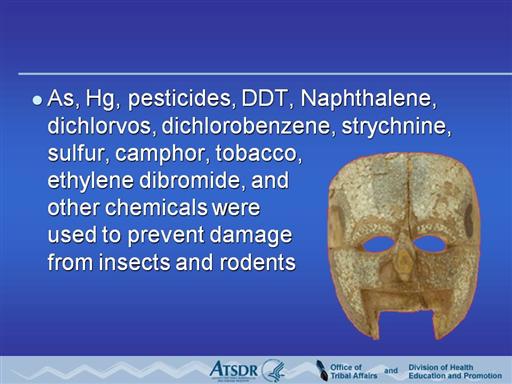 |
Many tribal artifacts are made of organic materials, such as leather,
feathers, organic paints, fur, and grass which are subject to pest attacks.
Historically, collection staffs, in order to preserve such items into
“perpetuity,” used many toxic preservatives to prevent damage from insects
and rodents. The more common historic museum pesticides include arsenic
trioxide, mercuric chloride, and dichlorodiphenyltrichloroethane (DDT)
which, among possibly 91 or so preservatives used throughout museum history,
are listed in the U.S. ATSDR/U.S. EPA list of
Top 20 Hazardous Substances in 1999.
|
